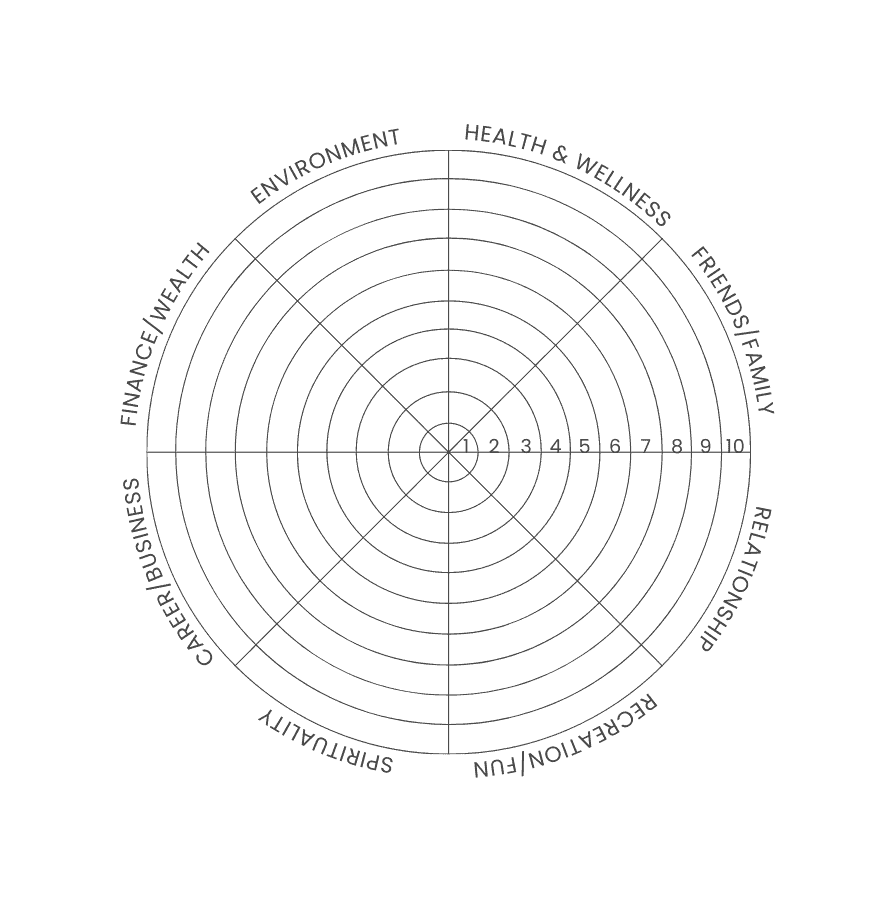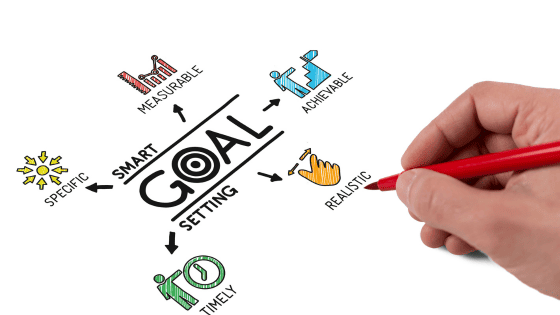A Life Audit: The Simple Guide to Gaining Clarity & Direction
It’s easy to lose sight of our goals, aspirations, and overall well-being. One way to regain focus and take control of our lives is to conduct a life audit.
What Is A Life Audit?
A life audit is a self-reflection exercise that helps us understand where we currently are in the various areas of our life, versus where we would ideally like to be.
It’s a powerful way to take stock of our lives as a whole and allows us to clearly identify where we might be out of balance, off target or in need of making some improvements.
It’s completely individual and allows us to check in with how we are currently living our lives, versus our ‘ideal’ version for our life.
When we have a clearer understanding of our current situation, we can then make intentional changes that align with where we want to be.
Why Do A Life Audit
One of the main reasons a life audit can help is by providing clarity and direction in our lives.
Whether you’re in the midst of a complete life overwhelm, or you just want to conduct a personal development ‘check-up’, a life audit is a simple way to:
- review the most important areas of your life and how they fit together,
- get clear on what your ‘ideal’ is for each important life area,
- identify what is and isn’t working for you, & then
- work out what steps you need to take to make it happen.
Overall, a life audit can be a valuable tool for anyone looking to make positive changes in their life.
By taking the time to reflect and evaluate your life, you can gain clarity, set goals, and make intentional changes that align with your values and priorities.
When To Do A Life Audit
There’s no one-size-fits-all answer to when you should do a life audit because it depends on your individual circumstances and needs.
However, here are some situations where it may be helpful to do a life audit:
- Major life transitions: such as starting a new job, ending a relationship, or moving to a new place can be good times to do a life audit. These transitions can create opportunities for reflection and help you to assess what you want, what’s working well and what needs to change.
- Feeling stuck or unfulfilled: if you’re feeling stuck or unfulfilled in your life, a life audit can help you to identify the areas that are causing these feelings and set goals for making changes.
- New Year or Birthday: the start of a new year or a birthday can be a natural time to reflect on the past year and set intentions for the year ahead.
- When feeling overwhelmed or stressed: a life audit can help you to prioritize the areas of your life that need attention and create a plan for managing your stress.
A life audit can be helpful anytime you feel the need to step back, reflect on your life, and make intentional changes.
It’s important to remember that a life audit is an ongoing process, not a one-time event, and that it’s okay to revisit and update your evaluation and goals regularly and when needed.
How To Do A Life Audit
Conducting a life audit can feel overwhelming at first, but breaking it down into manageable steps can make the process much more achievable.
Using the Wheel of Life technique, we can create a visual representation of how balanced one’s life is, which areas are going well and easily highlight what areas need improvement:
1. Determine Your Life Categories & Criteria
The first step in conducting a life audit is to define the categories that you will use to evaluate the different areas of your life.
These categories should include the areas most important to you, such as health, relationships, work and finances, and the specific criteria that you will use to evaluate each of these areas.
For example, we like to use the following life areas:
-
- Health & Wellness: evaluating your health and wellness can include assessing your physical health, mental health, diet, exercise, sleep, and self-care habits.
- Friends & Family: this can include assessing the quality of your relationships with family and friends, as well as your boundaries, how well you keep in contact, celebrate and commiserate together and support each other.
- Relationships: evaluating your relationships can include assessing the quality of your relationship with a romantic partner, as well as your communication skills, boundaries, support and growth.
- Fun and Recreation: evaluating your fun and recreation can include assessing the activities and hobbies that bring you joy and fulfillment, as well as the time and resources you actually dedicate to them. It can also include planned adventures, travel and new experiences you want to try.
- Spirituality: assessing your spirituality can include evaluating your connection to your personal beliefs, values, and purpose. It can involve exploring practices such as meditation, prayer, or mindfulness, as well as evaluating the impact of your beliefs and values on your daily life and decision-making.
- Career/Business: assessing your career can include evaluating factors such as job satisfaction, salary, work-life balance, career growth opportunities, alignment with your values and passions, side hustles and/or building a new business.
- Finances/Wealth: assessing your finances can include evaluating your income, expenses, savings, debt, investments, and financial goals.
- Environment: evaluating your current environment can include looking at the physical spaces where you spend your time, the people and culture around you, and the impact you have on the planet.
2. What Would A ’10’ Look Like in Each Life Area
In each important life area, take some time to think about what your ‘ideal’ state would be.
-
- How do you want to feel?
- How do you want to live?
- What do you want to do? To have? To enjoy?
With a 10 being completely satisfied, what would be a 10 out of 10 for you in each of these life areas?
3. Where Are You Now?
Take some time to reflect on each life area and ask yourself questions such as:
-
- Am I happy with my current situation?
- Am I making progress towards my goals?
- How do I feel about this area of life right now?
- What’s going well?
- What could be better?
Be honest with yourself and rate your satisfaction with each area on a scale of 1 to 10, with 10 being completely satisfied.
Fill in the sections according to your rating (e.g., if you rate your career at an 8, fill 80% of that section).
As you evaluate each area of your life, you may find that some areas are working well, while others need improvement.
The beauty of the Wheel of Life method is that you are provided with a visual representation of how balanced (or not) your life wheel is currently.
4. Review the gaps between where you want to be & where you are now
Analyze the wheel and identify the areas that might need improvement.
What’s working well so far? Take some time to be grateful for what is going well in your life.
Next, look at your wheel for the areas that require some attention from you.
What do you need to stop or start doing in order to improve this area?
Next Steps
Once you’ve completed the life audit, you will have gained some valuable information about what’s going on across all of your areas of life.
It’s created clarity. Now we need direction as to where to go from there.
By using the Wheel of Life, we can clearly see where our lives may be lacking balance and prioritize our personal and professional growth.
The final step in a life audit is to take action on what we’ve discovered.
This may involve making changes to your habits, routines, or mindset. It may also involve seeking out new opportunities or resources to help you achieve your goals.
For example, in the following example:
- The above life audit shows that the health/wellness and spirituality areas of life need the most attention right now, so let’s start by focusing on there.
- Create a list of specific and manageable tasks to work on improving those areas.
- Are there goals required here, or some simple changes in habits?
- Next, establish a timeline for these tasks or goals. Whether it’s short-term goals like going to the gym more often, meditating daily, donating blood, or doing some more volunteer hours in the community, or long-term goals like a major weight loss goal or running a marathon, it’s crucial to put deadlines on our aspirations. This will help us stay accountable and track our progress more effectively.
Now that we have a clear understanding of the next steps, let’s get started!
Remember, change and growth take time, so be patient and kind to ourselves throughout the process.
Life Audit Worksheet
If you would like a copy of the life audit worksheet you can grab a free copy here.
For more resources on taking action towards your goals, check out:






